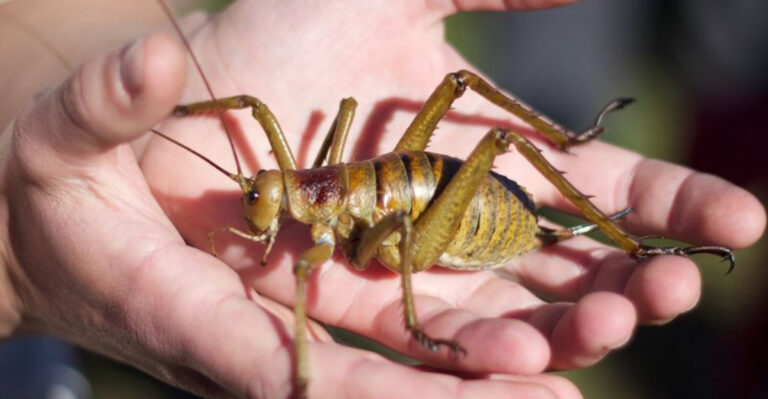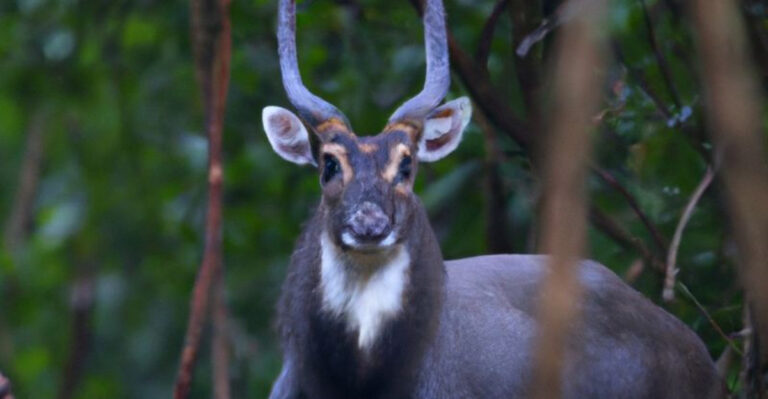How The Saber-Toothed Tiger Ruled Over The Ice Age Era
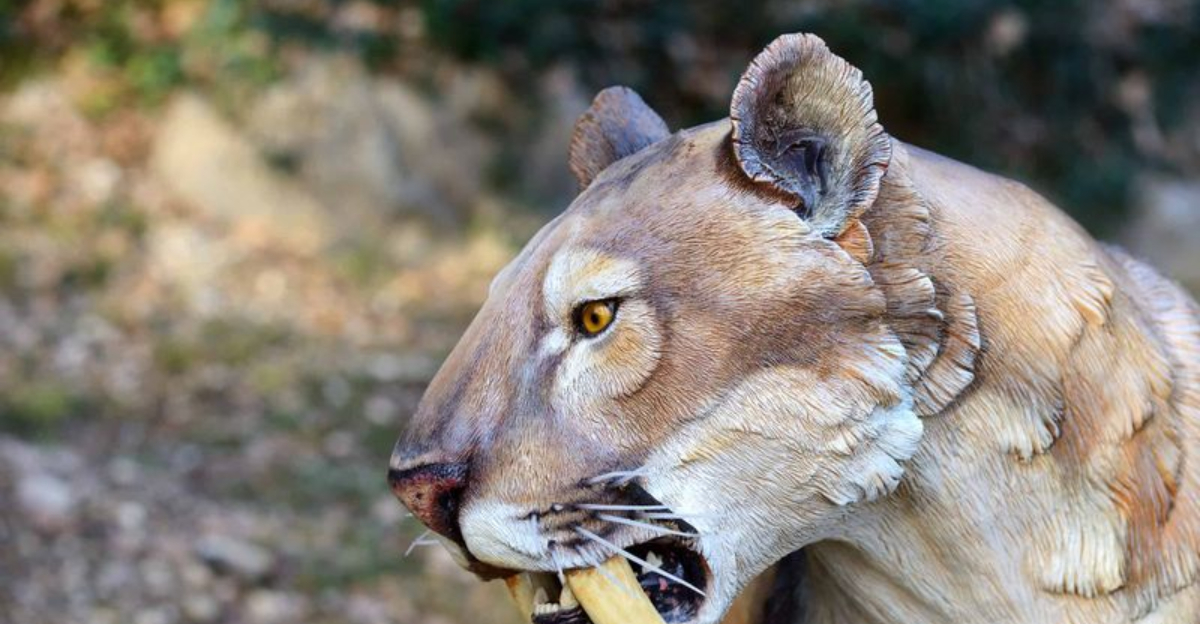
During the Ice Age, one predator stood out among the rest with its terrifying fangs and powerful build. The saber-toothed tiger wasn’t actually a tiger at all, but a fearsome cat that dominated the frozen landscapes for thousands of years.
These incredible hunters left their mark on history, and their adaptations to the harsh Ice Age environment made them true kings of their prehistoric world.
1. Deadly Daggers For Teeth
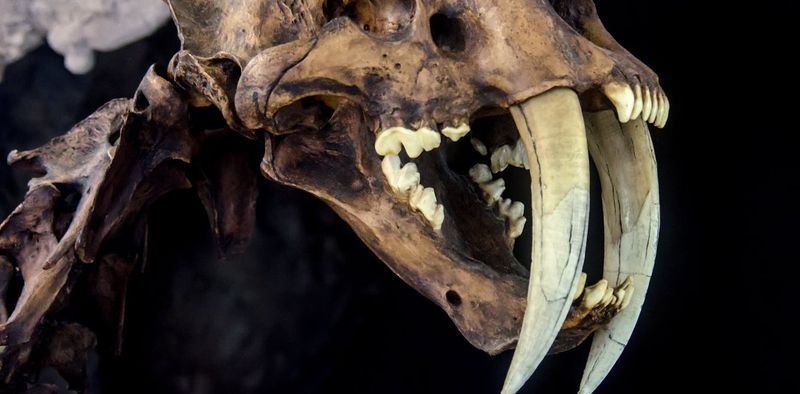
Those iconic fangs weren’t just for show! Saber-toothed tigers had canine teeth measuring up to 7 inches long, curved and sharp like deadly daggers.
Unlike modern cats whose teeth are built for crushing, these enormous fangs were specialized weapons for slashing through thick-hided prey. The cat would open its jaw to an amazing 120-degree angle to use these impressive teeth effectively.
2. Muscular Monster
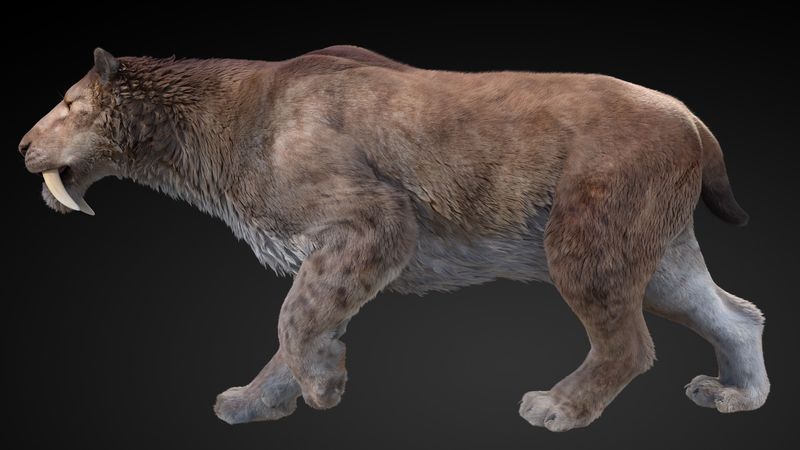
Built like prehistoric powerhouses, saber-toothed tigers had incredibly strong front limbs with muscles bigger than those of any cat alive today. Their stocky, bear-like bodies could weigh up to 880 pounds!
This massive strength wasn’t just for show. They needed powerful shoulders and necks to deliver deadly strikes with their fangs. Imagine a cat with the build of a weightlifter, designed specifically for taking down animals twice its size.
3. Surprising Social Lives
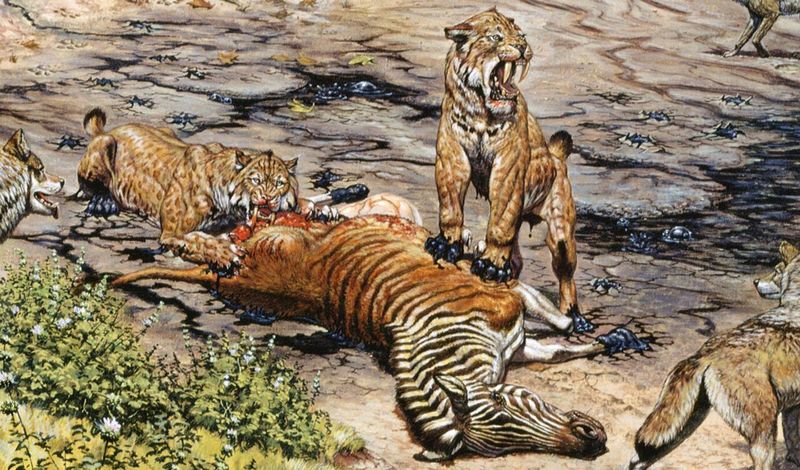
Forget the lone hunter image! Evidence suggests saber-toothed tigers likely lived and hunted in packs, similar to modern lions. Fossil findings show healed injuries that would have prevented solo hunting.
Group living provided protection and hunting advantages in the challenging Ice Age environment. Cubs probably stayed with the group for years, learning hunting techniques from experienced adults. This social structure gave them a significant edge over solitary predators competing for the same prey.
4. Ambush Masters
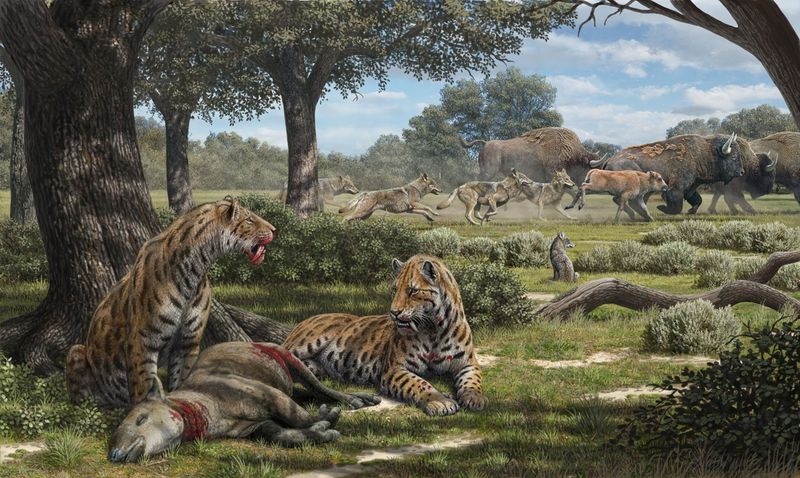
Despite their size, saber-toothed tigers were stealthy stalkers rather than long-distance runners. Their shorter legs and heavy build meant they couldn’t chase prey for miles like wolves or modern big cats.
Instead, they perfected the art of surprise, hiding in tall grass or behind rocks before pouncing with explosive power. Their hunting strategy relied on getting extremely close to prey before launching a sudden, devastating attack that utilized those massive front legs and deadly fangs.
5. Global Conquerors
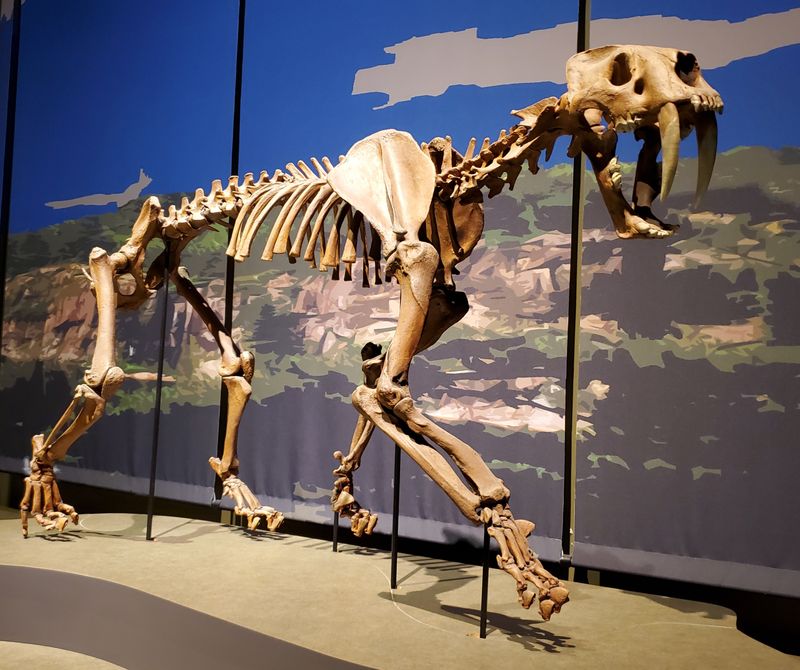
Talk about world travelers! Different species of saber-toothed cats roamed across almost every continent during the Ice Age, showing remarkable adaptability to various environments.
From the frozen tundras of North America to the grasslands of Africa and forests of Europe, these predators found ways to thrive. Their widespread success story lasted for millions of years, far longer than modern humans have existed. Each regional population developed slight variations to match their specific hunting grounds.
6. Mammoth Hunters
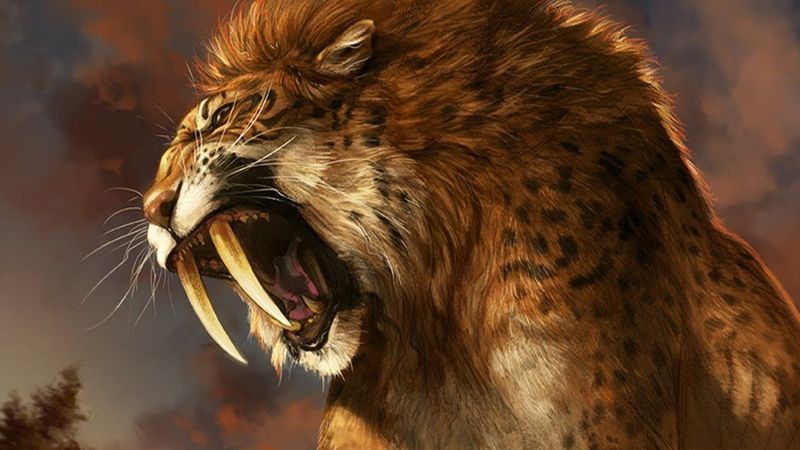
When dinner time came around, saber-toothed tigers didn’t shy away from supersized meals. These bold predators regularly targeted enormous Ice Age mammals like mammoths, giant sloths, and prehistoric bison.
Fossil evidence shows their teeth were perfect for slicing through the thick hides of these massive creatures. They likely targeted vulnerable areas like the belly or throat for quick kills. A single successful hunt could feed an entire group for days, making the risk worthwhile.
7. Not Actually Tigers
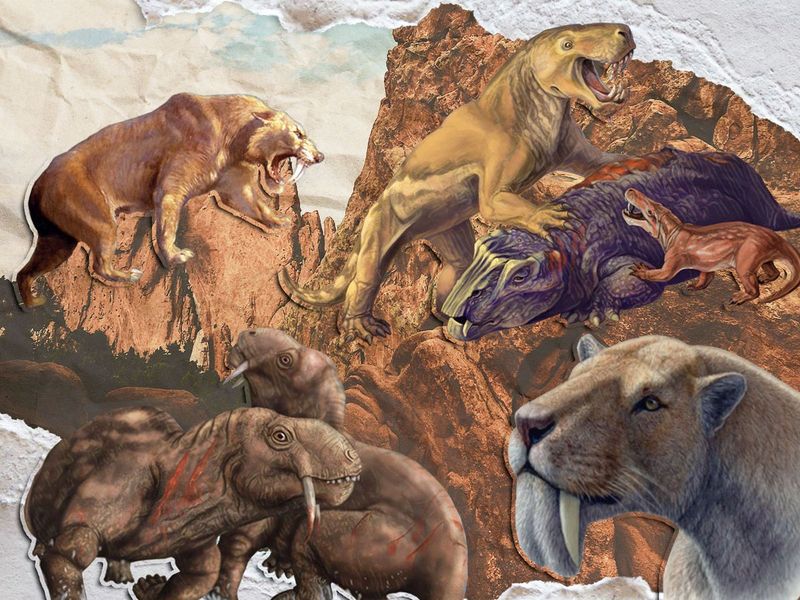
Despite their popular name, saber-toothed “tigers” weren’t tigers at all! The most famous species, Smilodon, belonged to an entirely different branch of the cat family tree that went extinct without leaving any modern descendants.
True tigers evolved separately and appeared much later. The confusion comes from early fossil hunters who named them based on superficial similarities. Modern science shows these prehistoric predators were as different from tigers as lions are from housecats, with unique adaptations for their Ice Age lifestyle.
8. La Brea’s Famous Residents
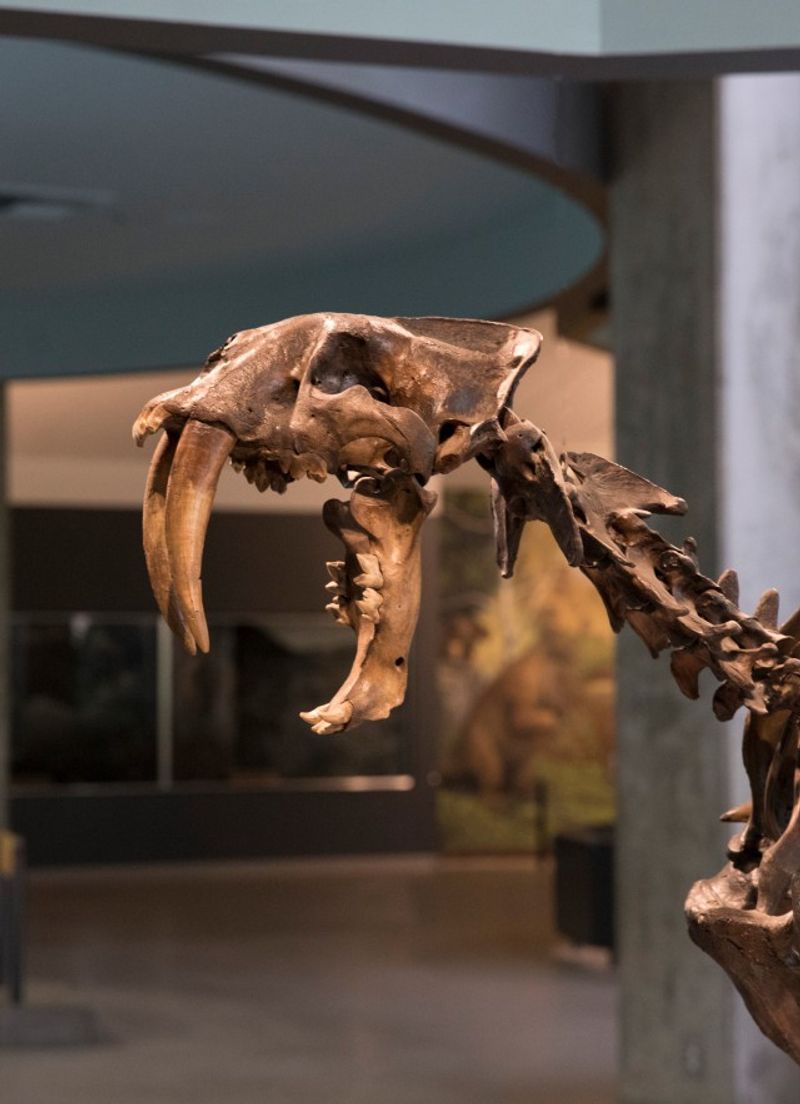
The La Brea Tar Pits in Los Angeles hold the world’s largest collection of saber-toothed tiger fossils, with over 2,000 individuals discovered! This remarkable site has taught us more about these cats than any other place on Earth.
The sticky tar trapped countless animals over thousands of years, preserving them in exceptional detail. Scientists have found complete skeletons, including delicate bones rarely preserved elsewhere. These fossils reveal growth patterns, injuries, diseases, and even information about their diet and behavior.
9. Supersized Roar
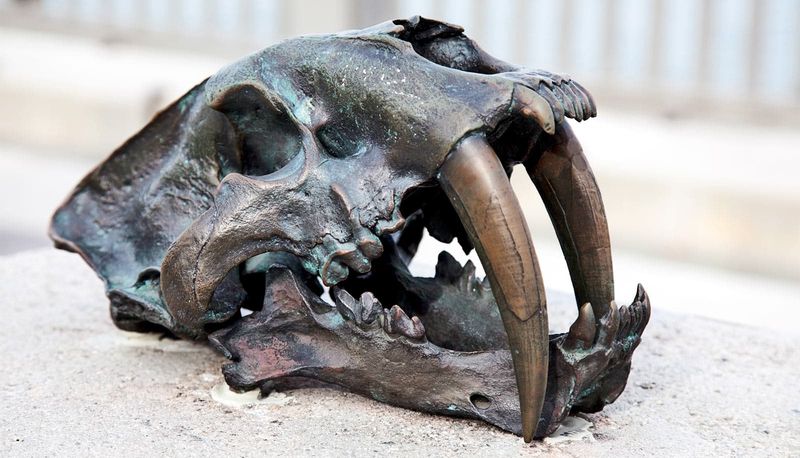
When a saber-toothed tiger roared, the Ice Age trembled! Their specialized throat bones suggest they possessed one of the most powerful roars of any prehistoric cat, likely used to claim territory and intimidate rivals.
Scientists studying their hyoid bones – which support the voice box – found evidence they could produce sounds even more intense than modern lions. Imagine a roar that could be heard for miles across the frozen tundra, announcing the presence of the era’s apex predator to everything within earshot!
10. Surprising Survival Skills
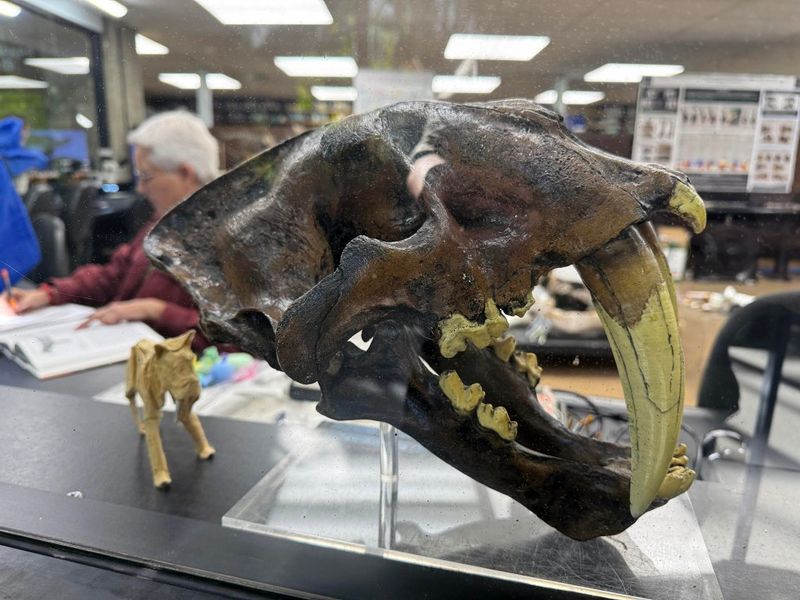
These ancient predators showed remarkable resilience! Fossil evidence reveals many saber-toothed tigers survived severe injuries that would have killed other animals, suggesting they received care from their social groups.
Broken bones, arthritis, and even missing teeth appear in specimens that clearly lived long after these injuries occurred. This survival wasn’t just luck – it likely demonstrates strong social bonds where group members helped injured hunters by sharing food. Their adaptability helped them thrive through changing climate conditions for millions of years.
11. Specialized Killing Technique
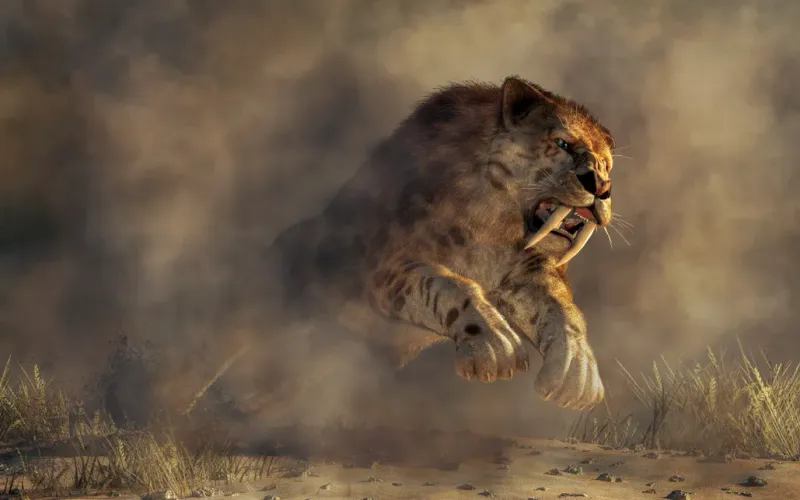
Saber-toothed tigers used a unique hunting method unlike any modern predator. Rather than a throat bite like lions use, they employed a precise stabbing motion to the soft underbelly or throat of prey.
Their entire body evolved for this specialized technique. Powerful neck muscles stabilized their head while those massive front legs pinned down struggling prey. The famous canines then delivered a fatal wound with surgical precision. This method allowed them to take down animals much larger than themselves with minimal risk.
12. Mystery Of Extinction
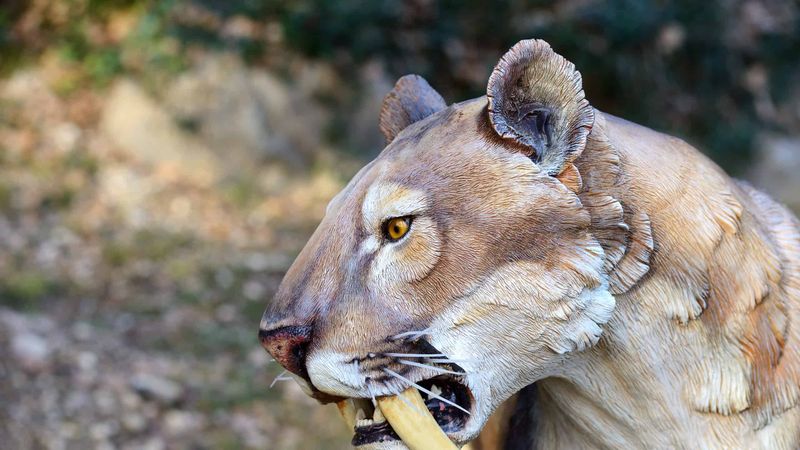
After ruling for millions of years, saber-toothed tigers mysteriously vanished around 10,000 years ago. Their disappearance coincides with two major events: rapid climate warming at the end of the Ice Age and the spread of humans across their habitat.
As temperatures rose, the massive prey animals they specialized in hunting began to die out. At the same time, early humans with advanced hunting tools competed for the remaining game. This perfect storm of challenges proved too much even for these mighty predators, ending their long reign as Ice Age royalty.





